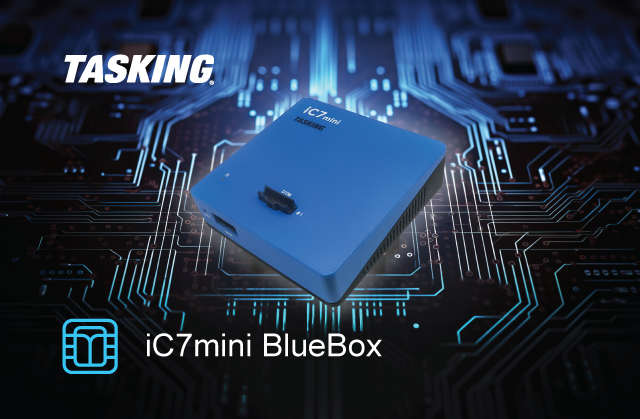





The iC7mini BlueBox is a next-generation platform designed for flashing, debugging, and testing a wide range of embedded microcontroller architectures. It includes multi-core support and an Automation SDK supporting all popular programming languages. Additionally, it offers testIDEA unit testing and daqIDEA data acquisition and visualisation tool.
Designed to excel as a debug and test tool, the iC7mini BlueBox is particularly well-suited for scenarios where advanced timing statistics and analysis are deemed unnecessary.
Unlocking new possibilities, the iC7mini BlueBox empowers you to establish cost-effective Continuous Integration (CI) setups, fostering an environment where CI processes accelerate through seamless collaboration across various locations. Tailored for effortless integration into CI test racks, the iC7mini's compact size ensures a harmonious fit. Moreover, its passive cooling system guarantees a quieter working environment, delivering functionality without compromising peace.
 产品详情
产品详情
• Improved
debug performance in comparison with previous BlueBox generation
• Universal
approach and easy switching for debugging multiple microcontrollers
architectures
• Standalone
CI operation ready
• Improved remote
operation
FEATURES
• Supporting winIDEA, Eclipse, and Visual Studio Code IDEs•Target hold control after Reset
•Hot attach/detach capable
•Autonomous data acquisition
•Time-critical SoC management (Low Power Mode)
•Target pin/power control
SUPPORTED MICROCONTROLLER ARCHITECTURES
• Infineon AURIXThe iC7mini BlueBox can become an integral component of the Continuous Integration (CI) infrastructure. The CI BlueBox functionalities are accessed through the open and public isystem.connect API, along with its corresponding Software Development Kits (SDK), available through subscription licensing.
Implementation of the iC7mini BlueBox provides globally distributed development and test teams with collaborative access to hardware debugging capabilities within the CI setup. The CI product comprises the BlueBox hardware, software, and consulting services, guiding users in establishing a CI infrastructure. This approach relieves individual developers from the complexities of managing hardware setups on their desks.
The mDIO port provides four digital signals, which can interact with the embedded target. Each can be configured either for input or output operation. You can use it for pin toggling and triggering and HIL control.
Above all, it is also fully controllable via isystem.connect API and therefore it can be used for test automation.



 成功案例
成功案例